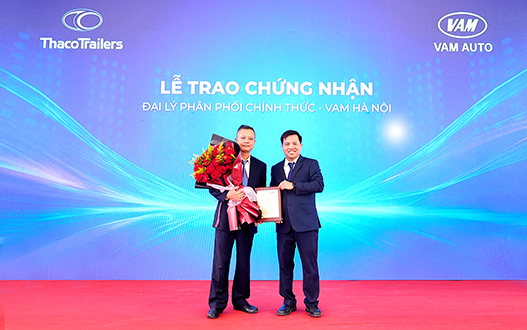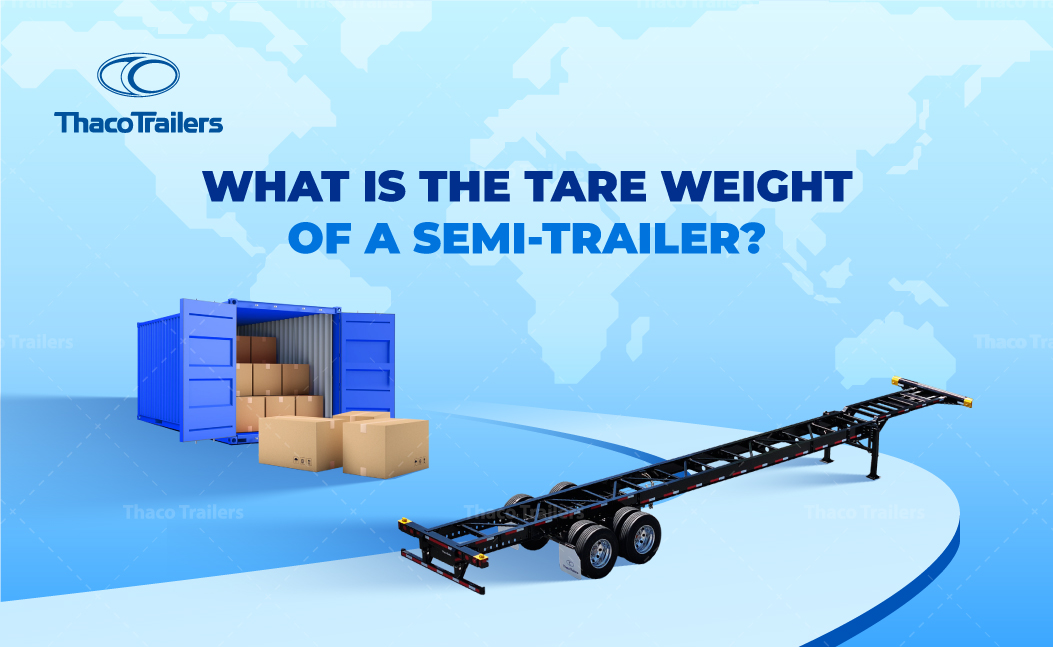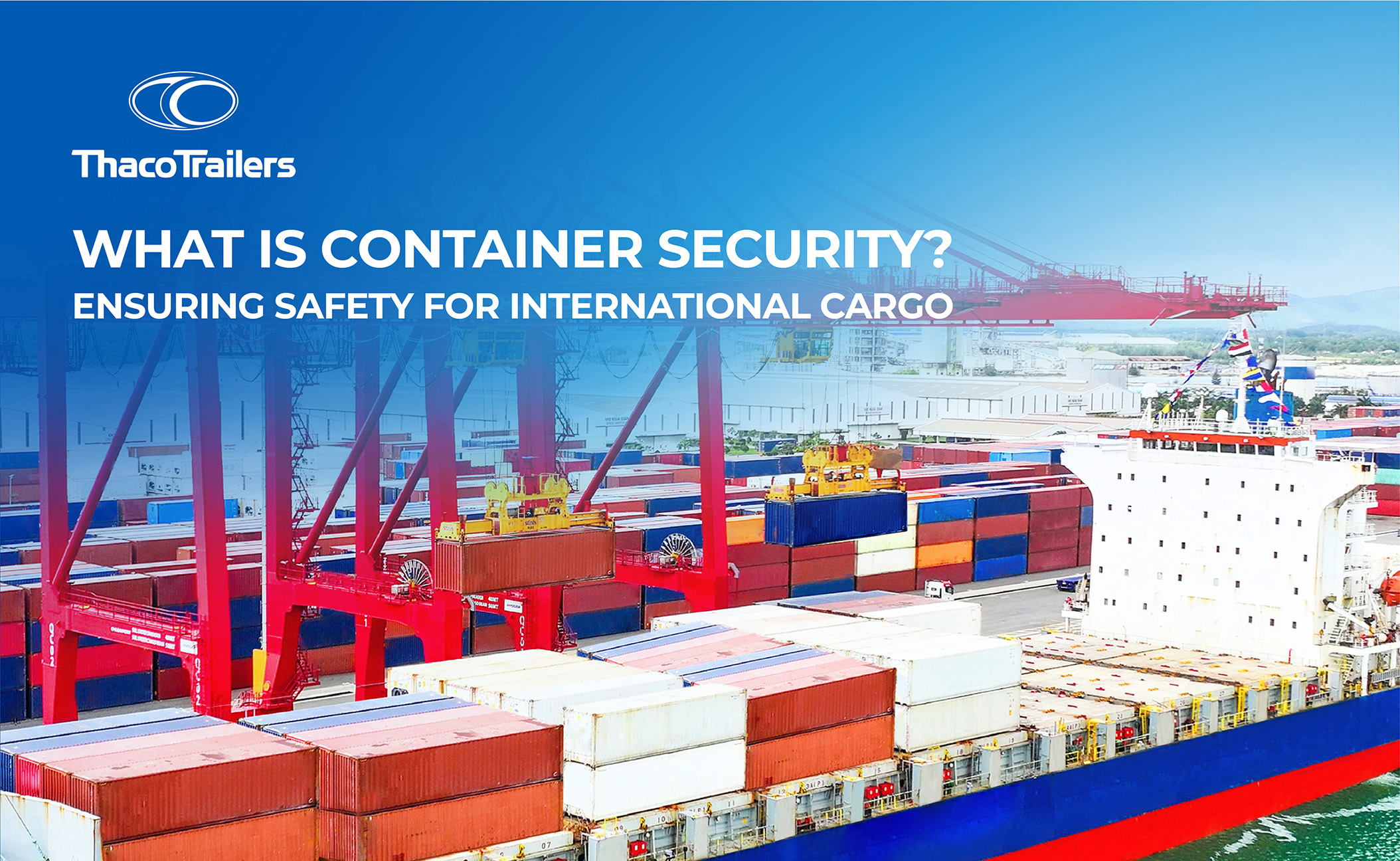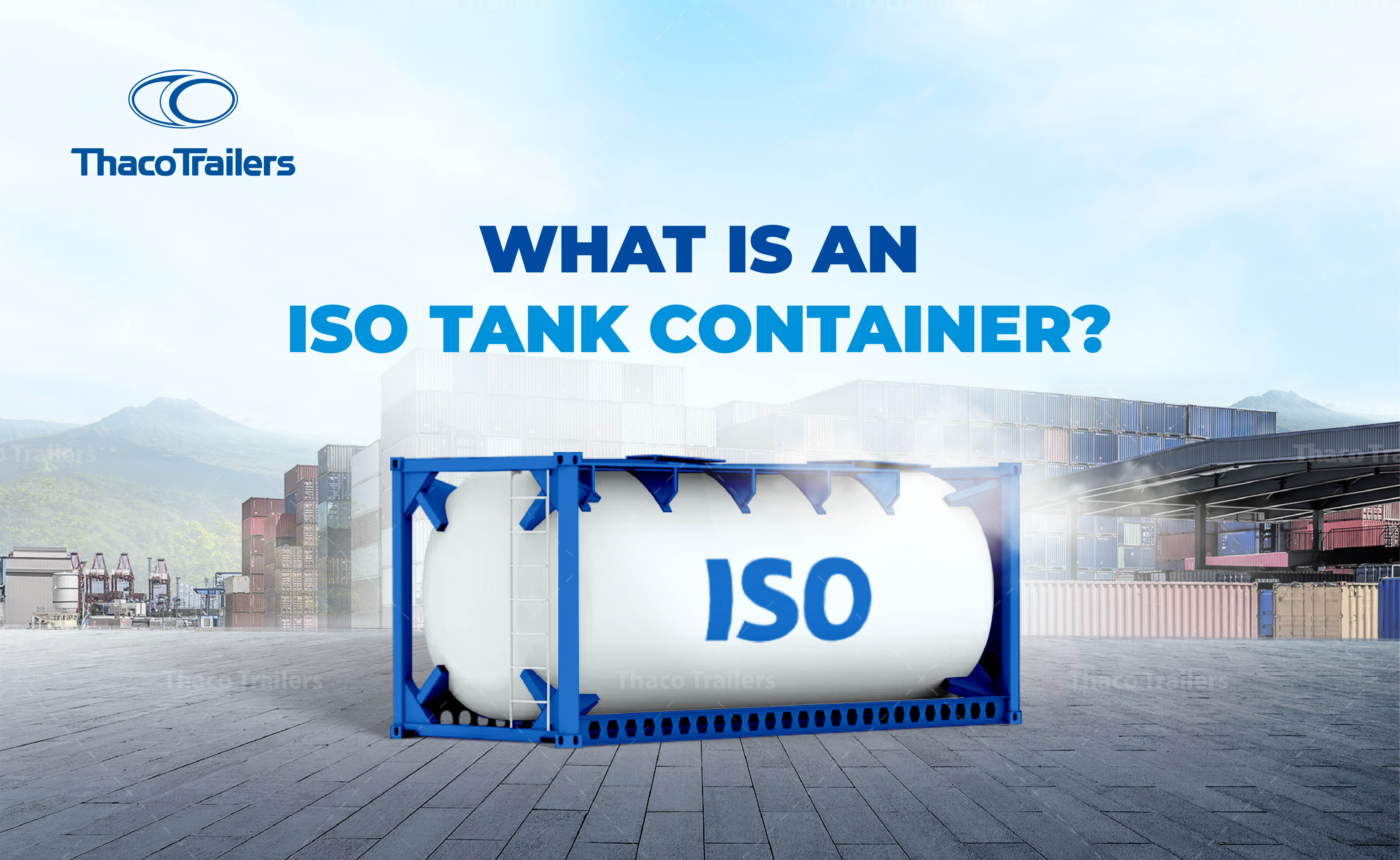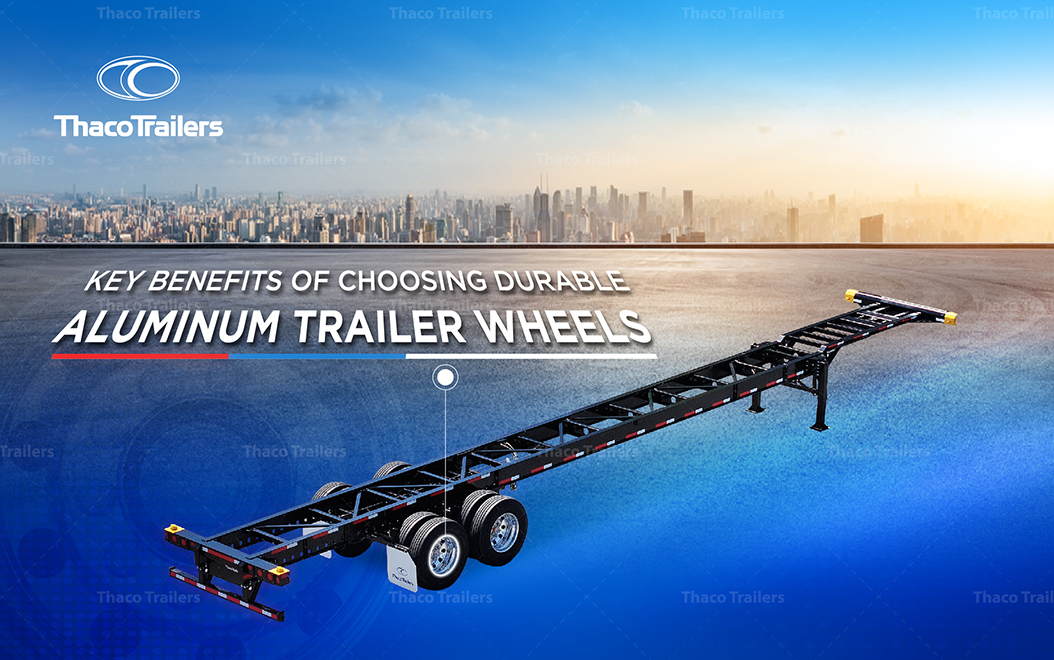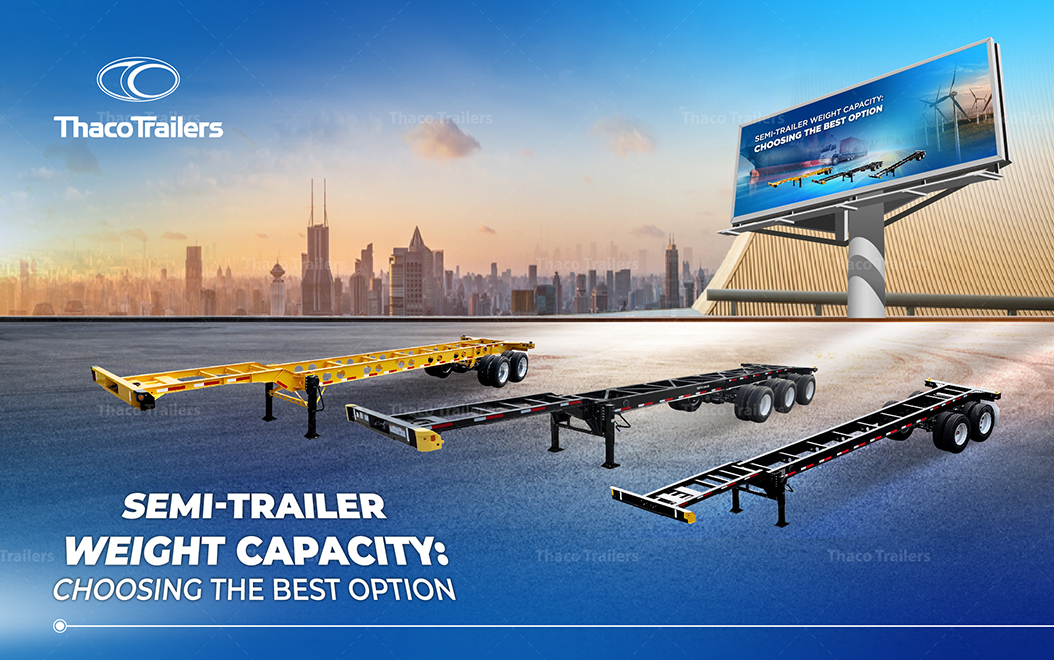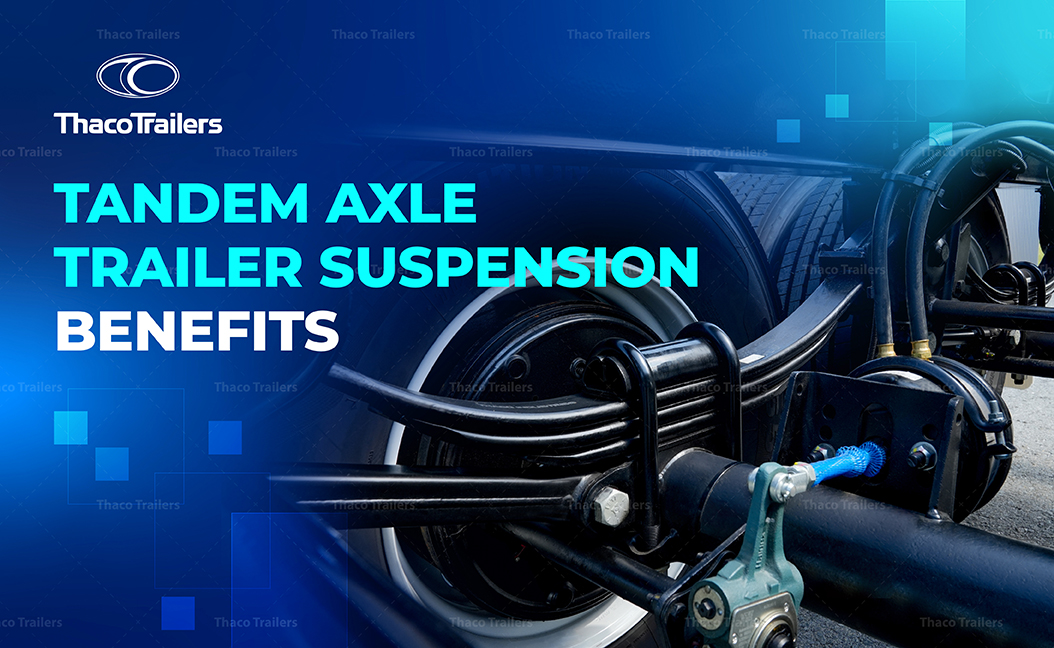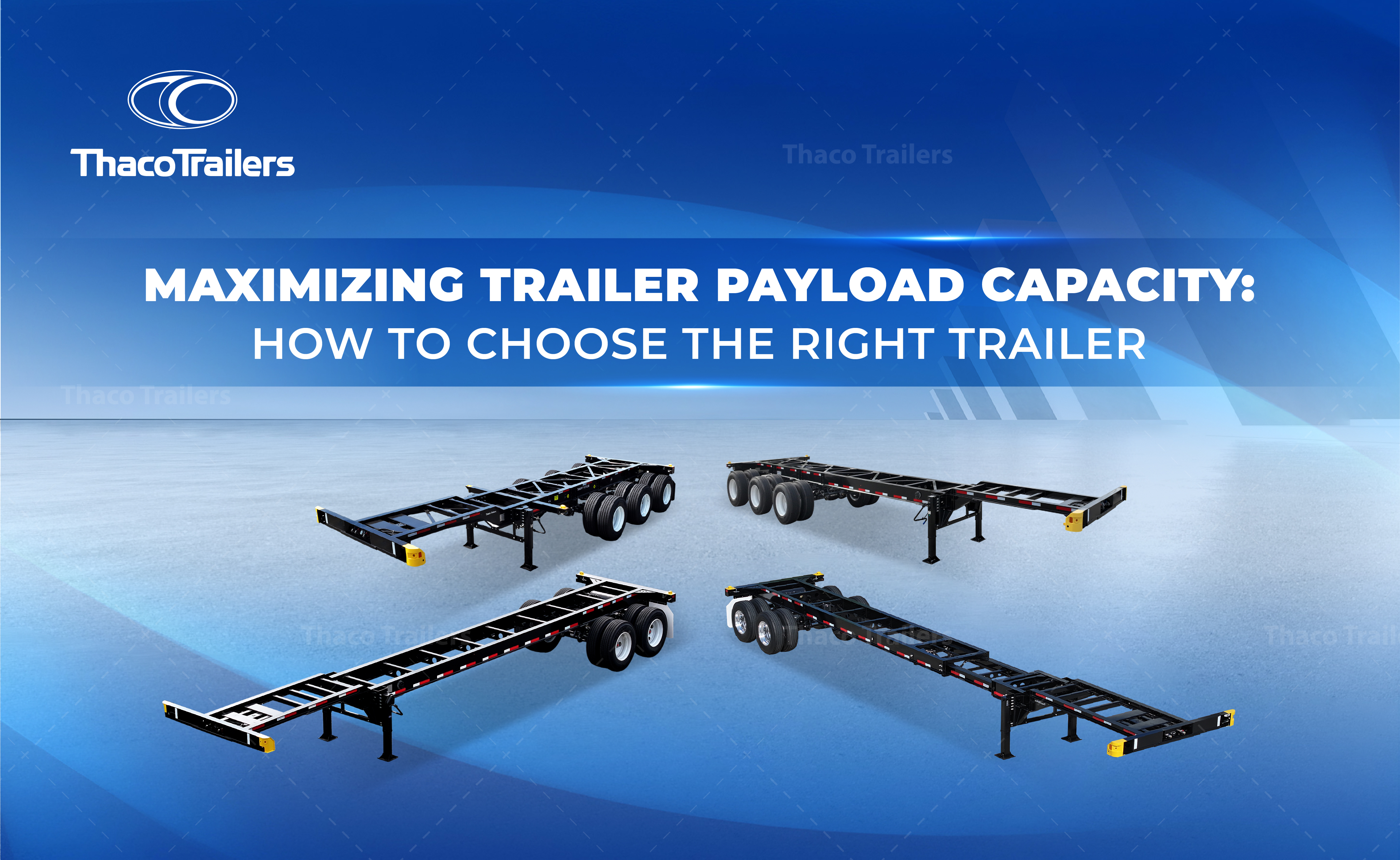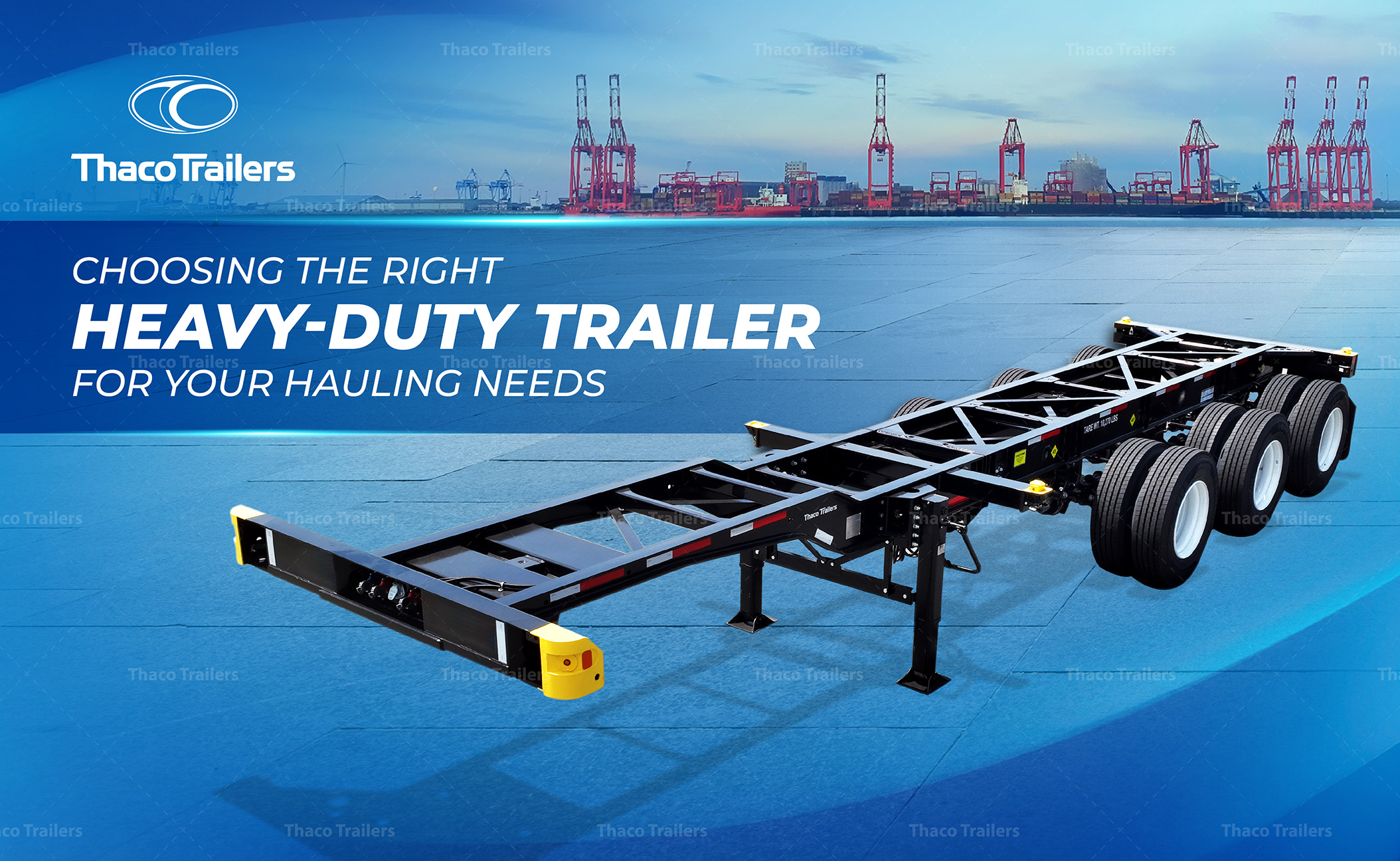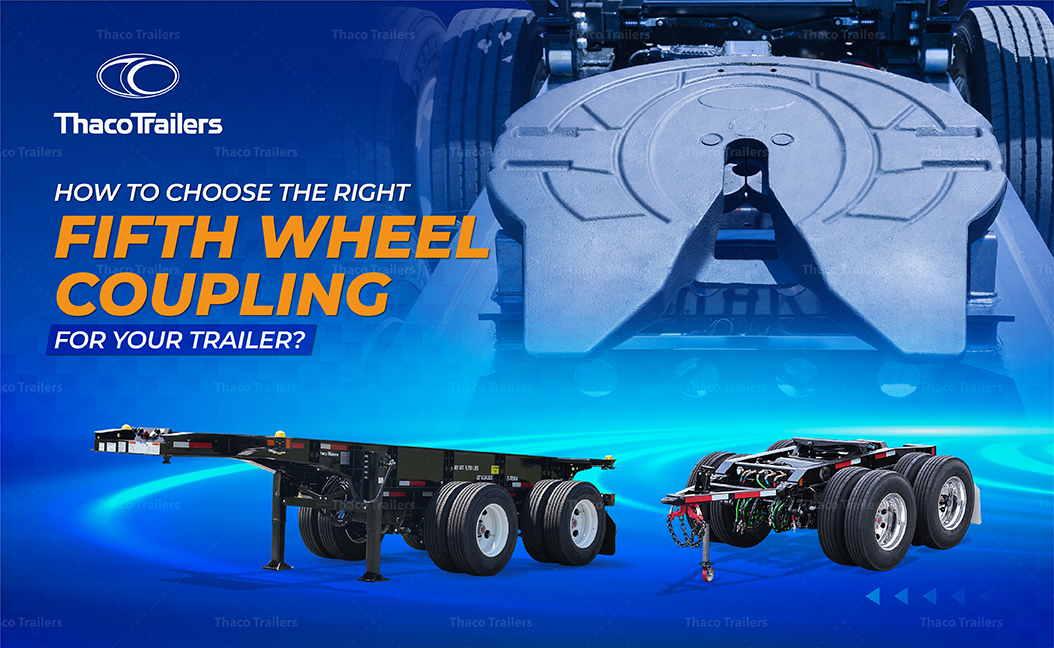UNDERSTANDING TRAILER AIR SUSPENSION: BENEFITS AND APPLICATIONS
Trailer air suspension systems are revolutionizing heavy-duty transportation by offering superior ride comfort, vehicle stability, and operational efficiency. These advanced systems enhance shock absorption, fuel economy, and cargo protection, while automatically adapting to diverse road conditions and varying load levels. As the logistics industry continues to evolve, Thaco Trailers leads with cutting-edge air suspension solutions, setting new benchmarks in trailer performance and reliability.
What is a trailer air suspension?
Trailer air suspension is an advanced system that replaces traditional leaf springs with air springs or airbags to support trailer loads. This technology delivers greater adaptability by adjusting ride height and stiffness based on cargo weight and road conditions, ensuring consistent performance and a smoother ride across all terrains.
A key advantage is the system’s ability to maintain trailer balance under asymmetrical load conditions. By modulating air pressure across the suspension system, it offsets uneven weight distribution, thereby enhancing ride stability and improving maneuverability. For modern fleets aiming to optimize performance and ensure load safety, air suspension has become a preferred solution.
Read more: Essential Parts of Trailer Suspension System
Advantages of trailer air suspension
Good shock absorption effect (More fuel-efficient)
Air suspension absorbs road shocks more effectively than conventional systems, allowing trailers to maintain steady speed on uneven terrain. This reduces the need for frequent acceleration and deceleration, helping lower overall fuel consumption during transit.
Protect the trailer chassis components
With superior damping capabilities, air suspension minimizes vibration transfer to the chassis, reducing mechanical stress on structural components. This lowers the risk of fastener loosening and extends the lifespan of the trailer body – one reason why trailers with air suspension tend to offer longer service life.
Read more: Understanding Chassis and Trailers: A Comprehensive Guide
Easy commodity loading and unloading on platforms of varying height conditions
Adjustable ride height enables precise alignment with loading docks of different elevations. This feature simplifies the loading process, reduces the risk of platform mismatch, and improves operational efficiency on-site.
Save tires and protect the road
The responsive design of air suspension ensures even tire-to-road contact, especially on uneven roads. This helps minimize tire wear, extend service life, and reduce road surface damage. The “soft link” behavior of the suspension also lessens the trailer’s structural impact on roads, contributing to reduced infrastructure maintenance costs.
With these benefits, trailer air suspension represents a strategic investment for fleet operators aiming to enhance operational performance, reduce long-term costs, and protect valuable cargo.

Read more: How tall is a semi trailer? Understand the dimensions of semi-trailer
Disadvantages of trailer air suspension
Despite its advantages, trailer air suspension systems also present several considerations:
Higher initial and maintenance costs
Air suspension systems are more expensive to install than leaf spring suspensions. Maintenance costs are also higher due to the complexity of the system and the need for specialized parts and skilled technicians. Over a 10-year period, repair expenses can be up to three times higher compared to conventional systems.
Additional fuel consumption
Air suspension relies on compressors to maintain optimal air pressure. These compressors consume power, leading to higher fuel use. While some of this may be offset by better ride efficiency, fuel consumption remains a concern, particularly for cost-sensitive operations.
Vulnerability to air leaks
A major issue with air suspension systems is their vulnerability to air leakage. The minor leaks may result in system failures, leading to ride height imbalances, performance reductions, or system failures. Frequent inspections and timely repairs are necessary, increasing the overall maintenance burden.
Read more: The advantages of using air ride trailers in transportation
Complexity and potential for electronic failures
Electronic parts are commonly found in air suspension systems for control and monitoring. Although they increase functionality, they also increase the number of failure points. Electronic problems may be harder and costlier to detect and overcome than mechanical problems with conventional suspension systems.
Performance in extreme conditions
In extremely cold conditions, moisture within the system may freeze, causing damage. Additionally, air suspension components are prone to faster degradation in dusty or corrosive environments, which increases maintenance frequency and replacement needs.
How does air ride suspension work?
Air ride suspension—commonly referred to as air suspension—uses airbags to support vehicle weight and absorb shocks. Though the fundamental principle remains consistent, system complexity varies by axle configuration:
Air Ride Single Axle
In a single-axle configuration, the air suspension system typically consists of:
- Two air springs (one on each side of the axle)
- A height control valve
- Airlines connecting to an air supply (usually the truck’s air brake system)
The air springs replace traditional steel springs or leaf springs. As the trailer’s load changes, the height control valve adjusts the air pressure in the springs to maintain a consistent ride height. This system provides a stable ride and better load distribution compared to conventional suspension systems.
Tandem Axles
For trailers with tandem axles, the air suspension system becomes more complex:
- Four air springs (two per axle)
- One or two height control valves
- A load equalization system
The key feature in tandem axle air suspensions is load equalization. This system ensures that the weight is distributed evenly between both axles, regardless of road conditions or load placement. It typically uses a rocker arm or equalizer beam that connects the two axles, allowing them to move to each other while maintaining balance.
Triple + Axles
In configurations with three or more axles, the air suspension system further expands on the tandem axle concept:
- Six or more air springs (two per axle)
- Multiple height control valves
- Advanced load equalization systems
These systems often incorporate more sophisticated control mechanisms to manage the increased complexity. They may include electronic controls to optimize load distribution across all axles and improve maneuverability, especially for longer trailers.
Read more: Exploring the different types of trailer landing gear
Key consideration air for trailer suspension
Load Capacity
Evaluate the maximum and peak loads your trailer must support. Choose a suspension system that meets current operational needs and complies with legal weight limits.
Ride Quality
Consider the terrain and cargo sensitivity. Look for systems with excellent shock absorption and damping to protect cargo and enhance driver comfort during long hauls.
Adjustability
Assess whether adjustable ride height is necessary for your operations. Consider the need for manual or automatic load-leveling and whether kneeling capabilities would aid in cargo handling.
Maintenance Requirements
Research the durability and lifespan of different air suspension components, and consider the availability and cost of replacement parts. Evaluate the complexity of the system and the maintenance skills required. It’s also wise to look into warranty coverage and support offered by manufacturers.
Read more: How To Choose The Right Fifth Wheel Coupling For Your Trailer?
Cost Considerations
Finally, cost considerations play a significant role in the decision-making process. Compare initial installation costs with long-term operational benefits, and factor in potential fuel savings due to improved aerodynamics. Consider the impact on tire wear and overall vehicle maintenance. Evaluate the return on investment based on your specific operations to ensure that the chosen air suspension system provides long-term value for your trailer operations.
Thaco Trailers’ semi-trailers are equipped with state-of-the-art suspension system, ensuring enhanced performance and reliability
Cutting-Edge Suspension Technology
Thaco Trailers is at the cutting edge of trailer engineering by providing semi-trailers with state-of-the-art suspension. These sophisticated systems are made to provide excellent performance and unmatched robustness under a wide range of road conditions. To that end, Thaco Trailers utilizes advanced air suspension technology so that the semi-trailers have the load distribution optimized, greater stability, and better ride quality.
Tangible Benefits for Fleet Operators
This involvement in innovation bears practical results for fleet operators. These include reduced wear and tear on both the trailer and its cargo, improved fuel efficiency, and increased overall longevity of the equipment. Coarse or rough road, Thaco Trailers’ suspension systems all deliver the versatility and reliability that tomorrow’s logistics require.
Exceeding Industry Standards
With these advanced features, Thaco Trailers not only meets but exceeds industry standards, positioning itself as a leading manufacturer and a dependable partner for businesses seeking high-performance transport solutions. Its commitment to cutting-edge suspension technology reflects a steadfast focus on delivering high-quality, durable, and efficient semi-trailers tailored to the evolving demands of the transportation industry.
Contact Information:
- Hotline: (+84) 933 805 707
- Email address: thacosv@thaco.com.vn
- Facebook: https://www.facebook.com/thacotrailers.vn

